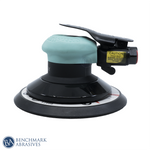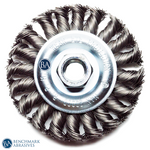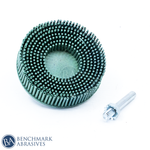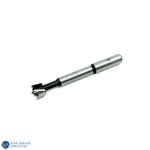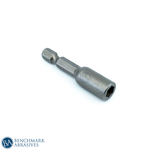
The Basics, Applications, and Considerations Of Pure Tungsten Electrodes

This specification aims to help welders choose and get ready for one of the most significant—yet often disregarded—welding process variables: the tungsten electrode. Welders may purchase thousands of dollars worth of equipment. Still, if they do not correctly choose and prepare their electrodes using this less costly process component, their welds may come out poorly, inconsistently, or with issues. With the help of this advice, you may turn this variable from a source of worry to an advantage when welding.
The selection and preparation of electrodes for Gas Tungsten Arc Welding (GTAW), commonly referred to as Tungsten Inert Gas (TIG) welding and Plasma Arc Welding (PAW), is the only focus of this information. This pertains to many forms of GTAW and PAW welding, such as Orbital Tube and Pipe Welding, Automatic/Mechanized TIG Welding, "Micro-TIG," Automatic/Mechanized Plasma Welding, "Micro-Plasma," and Manual Arc Welding, among others. This post section on suitable electrode grinding processes is almost exclusively focused on direct current welding because alternating current welding electrodes are often balled rather than ground.
APPLICATIONS OF TUNGSTEN ELECTRODES
The aerospace, semiconductor, biotechnology/pharmaceutical, tube producers, contractors, automotive, fitting and valve manufacturers, industrial, nuclear, and specialty gas industries are just a few of the businesses that employ GTAW.
Applications for Correctly Ground, Cut, and Prepared Tungsten Welding Electrodes for TIG Welding Applications.
-
ORBITAL TIG/TUBE WELDING
The tungsten electrode shape is a crucial factor that needs to be maintained constantly to achieve the superior orbital fusion welds needed by today's advanced technology sectors. The majority of orbital manufacturers want an exact tungsten length. -
ORBITAL TIG/PIPE WELDING.
The nuclear, pharmaceutical, and chemical processing industries are the main sectors where TIG orbital pipe welding is used. These businesses require X-ray flawless orbital pipe welds in the 125 amp to 300 amp current range, in addition to a few others not listed.
Consistent arc voltage characteristics and current flow necessitate a consistently prepared electrode. Most orbital pipe welders utilize electrodes with a diameter of 3/32 or 1/8. They must also be trimmed to length, although with a different level of accuracy than an orbital tube welder.
-
AUTOMATION IN TIG WELDING
Mechanized tig welding has several uses, from high-speed tube mills welding with a 250-diameter tungsten electrode at currents up to 600 amperes to precise bellows welding with an electrode of.040 diameter at 1.0 ampere. A consistent and accurate electrode will significantly impact tungsten electrode life and weld quality. If the tungsten electrode is significantly polluted, cutting it is typically necessary.
-
TIG WELDING BY HAND
The manual welder will benefit from arc beginning and arc stability from a tungsten electrode that is regularly prepared. To accommodate most hand-welding TIG torches, an electrode that is 7.0" long must be cut in half. This booklet's diamond-cutting mechanism is the most effective way to do this.
-
PLASMA ARC WELDING: MANUAL AND MECHANIZED
A tungsten electrode with a highly accurate form is needed for the plasma arc welding process. To position the tungsten in the proper center within the plasma torch, it must be kept concentric to the diameter. This parameter adjustment is crucial in plasma arc welding. A tungsten electrode trimmed to length is an additive to most plasma welding torches.
The technical element of TIG and PLASMA arc welding is the transport of an electric arc from a tungsten electrode to a workpiece. High voltage is usually applied to break down and ionize the shielding gas between the electrode and the workpiece to start the arc. An electric arc is then produced by moving current from the electrode to the work. The electric arc's terminal is the tungsten electrode, which can fuse together with or without filler material.
A welding technique involves several variables to take into account. The geometry of tungsten electrodes influences the weld penetration, point lifespan, and arc form, which in turn influences the size and shape of the weld bead. The adoption of appropriate electrode grinding techniques and tools is necessary to guarantee the dimensional accuracy of the electrodes. Lastly, the qualities of arc start ability, electrode life, and contamination resistance vary throughout tungsten materials. Because of this, choosing the suitable material for your application is a crucial factor in welding performance. Every one of these regions will benefit from consistent welding with maximum performance if the electrodes are correctly prepared.
SELECTING THE CORRECT TUNGSTEN
Numerous factors determine the appropriate material for a particular application, such as the type of weld, the material composition, and the amperage level. The section that follows highlights the options available and the recognized standards. The suggestions are predicated on data from tungsten producers and industry end users. However, generalizing is challenging due to the numerous factors involved in the welding process. Testing is the most effective method of identifying which tungsten material is most appropriate for a specific application.
THE FUNDAMENTALS
Lengths and Diameters. There are numerous standard lengths and diameters for tungsten electrodes. The diameters that are most often utilized are:
- 1.0 mm
- 1.6 mm
- 2.4 mm
- 3.2 mm
- 4.0 mm
- 4.8 mm
Some manufacturers also sell tungsten in diameters of ¼" (6.4 mm) and 020" (0.5 mm). The most typical length is 175 mm, or 7.00". Typically, tungsten comes in boxes containing ten pieces.
CURRENT INTERVALS: A table illustrating the general current ranges for tungsten utilizing Direct Current (DC) and Alternating Current (AC) is provided in the American Welding Society paper. The mentioned numbers are all predicated on the use of argon as the shielding gas. These recommendations may differ slightly depending on the type of electrode material. The suggested currents will vary if alternative gasses are used. This chart should, therefore, be regarded as a general reference. Remember that larger diameter electrodes will last longer for a given amperage but will be more challenging to arc start. Overcurrent will melt the electrode and cause it to fall off. An unstable arc will result from insufficient current.
INTERNATIONAL COLOR CODING CHART: Each tungsten stick's material type is identified by a color code affixed to one end. The American Welding Society paper provides a table detailing the color coding used in the United States, Europe, and Japan—which together account for the majority of the marketed tungsten market share.
STANDARDS: The US, Europe, and Japan publish tungsten standards. These standards set the size, packing, and manufacturing specifications for tungsten. However, meeting these requirements does not ensure that a specific tungsten was produced by a reputable producer.
FACTORS THAT INFLUENCE TUNGSTEN PERFORMANCE
Welders typically utilize tungsten that has an oxide that increases emission, like lanthanum, cerium, or thorium. These oxides naturally go from the tungsten's interior to the electrode's heat point, where they release their oxide element into the arc and leave behind a metal alloy coating at the tip. Because of this, the electrode's tip temperature varies according to the element's work function. The arc initiation and stability are enhanced by the oxides released at the tip.
Additionally, at significantly lower temperatures, they cause the electrode to emit at the same level as pure tungsten. Lower temperatures prolong the tungsten's life and maintain its smaller grain size for better arc stability. Therefore, oxides constitute a significant portion of tungsten. The distinct physical properties of each oxide impact the performance of tungsten. Furthermore, the tungsten's performance will be affected by the manufacturing process.
VARIABLES IN MANUFACTURING
GRAIN STRUCTURE AND SIZE: This illustrates the tungsten point's internal molecular structure and how it is separated into smaller units known as grains. Mainly along the edges or borders of these grains, oxides go to the tip of the tungsten. The migration of oxides from the inside of the tungsten to the tip of the grain boundaries is considerably more straightforward than the migration of oxides within the crystallized grains. Smaller grains work better for making tungsten because they create more pathways, which makes it easier for the oxides to migrate to the tip.
A challenging production procedure is minimizing particle size while keeping the right amount of oxides and optimizing oxide dispersion consistency. This challenge in the manufacturing process is the leading cause of the variations in tungsten performance quality generated by the various producers.
THE TUNGSTEN INNER POINT'S MOLECULAR STRUCTURE
In a process known as "grain growth," grains have a propensity to fuse to form one giant grain during the extremely high temperatures of welding. On the other hand, if an ongoing flow of oxides is kept at the grain boundaries, this acts as a barrier around the grains to prevent them from mixing.
The tungsten works poorly because it lacks pathways for the oxides to rise to the surface when it runs out of oxides in any one place, causing the grains to mix readily. In Figure 1, an hour of welding at 180 amps on a 1/16" electrode preserves the very tiny grain structure of the 2% Lanthanated electrode. The oxide characteristics of the 2% lanthanide tungsten and high-quality production cause this situation.
OXIDE DISTRIBUTION AND SIZE: One crucial criterion of quality is oxide distribution. The oxides must be evenly distributed throughout the tungsten. Poor performance results from uneven distribution: places with little to no oxides will typically have trouble supporting grain growth, while areas with excessive oxide will likely "bottleneck," preventing the oxides from reaching the point. Smaller-sized oxides of higher grade make it easier for them to move to the tip.
PURE TUNGSTEN: GREEN STRIPE (EWP ELECTRODE CLASSIFICATION)
With no deliberate alloying materials, pure tungsten electrodes (EWP) have a minimum tungsten content of 99.5 percent. Compared to other materials, pure tungsten has a very high work function, making it more difficult to ignite and maintain a stable arc. Additionally, grain development happens near the tip because of a greater temperature caused by the increased work function. This results in a lower service life, an unsteady arc, and trouble starting. AC welding is the only application for pure tungsten; however, there are better options.
CRITERIA FOR TUNGSTEN ELECTRODE SELECTION
- SUITABILITY OF MATERIALS
- PROCEDURE FOR WELDING
- AMPERAGE RANGE
- POLARITY
- POSITION FOR WELDING
GRINDING AND PREPARATION OF TUNGSTEN ELECTRODES
- APPROPRIATE ANGLE OF GRINDING
Tungsten electrodes should be ground to an exact taper angle, usually between 15 and 20 degrees, in order to promote even arc initiation, steady arc stability, and accurate weld pool formation control.
- GRINDING TOOLS
For best results, use specialized tungsten electrode grinding equipment, such as portable grinding wheels with aluminum oxide or diamond grinding wheels, bench grinders, and tungsten grinders.
- PREVENTING ELECTRODE CONTAMINATION
When grinding, handling, and storing electrodes, avoid contaminating them with oil, grease, or other particles. These can negatively impact the quality of the weld and the arc stability.
TUNGSTEN ELECTRODE UPKEEP
- STORAGE PROCEDURES - To ensure maximum electrode performance and longevity, store tungsten electrodes in dry, clean containers or electrode storage tubes to avoid moisture absorption, oxidation, or contamination.
- EXAMINING—To preserve welding quality, periodically check tungsten electrodes for indications of wear, damage, or contamination, such as chipping, discolouration, or cracks. If necessary, replace or repair the electrodes.
- ADJUSTING ELECTRODES—Redress tungsten electrodes using the proper electrode dressing instruments, such as specialized electrode grinders or abrasive stones, to restore the electrode tip geometry and eliminate surface impurities.
PROSPECTS FOR THE FUTURE OF TUNGSTEN ELECTRODE TECHNOLOGY
- PROGRESS IN COMPOSITION - It is anticipated that ongoing research and development will produce novel compositions of tungsten electrodes designed for specific welding applications, providing improved longevity, environmental sustainability, and performance.
- CREATION OF COMPOSITE ELECTRODES - The development of hybrid tungsten electrode designs that combine new materials or coatings has the potential to improve electrode longevity, weld pool behavior, and arc characteristics for a variety of welding procedures and materials.
- WELDING AUTOMATION INTEGRATION - The industrial and fabrication sectors are about to witness a revolution in welding processes, productivity, and quality control thanks to the combination of tungsten electrode technology with cutting-edge welding automation systems, such as robotic welding cells and intelligent welding platforms.
CONCLUSION
To sum up, pure tungsten electrodes are the indispensable cornerstones of welding technology, providing unmatched precision, performance, and adaptability for a wide range of welding materials and applications. By comprehending the subtleties of tungsten electrode selection, preparation, and application, welders may maximize the benefits of this indispensable welding consumable and ensure the best possible weld quality, productivity, and safety in their welding endeavors.












